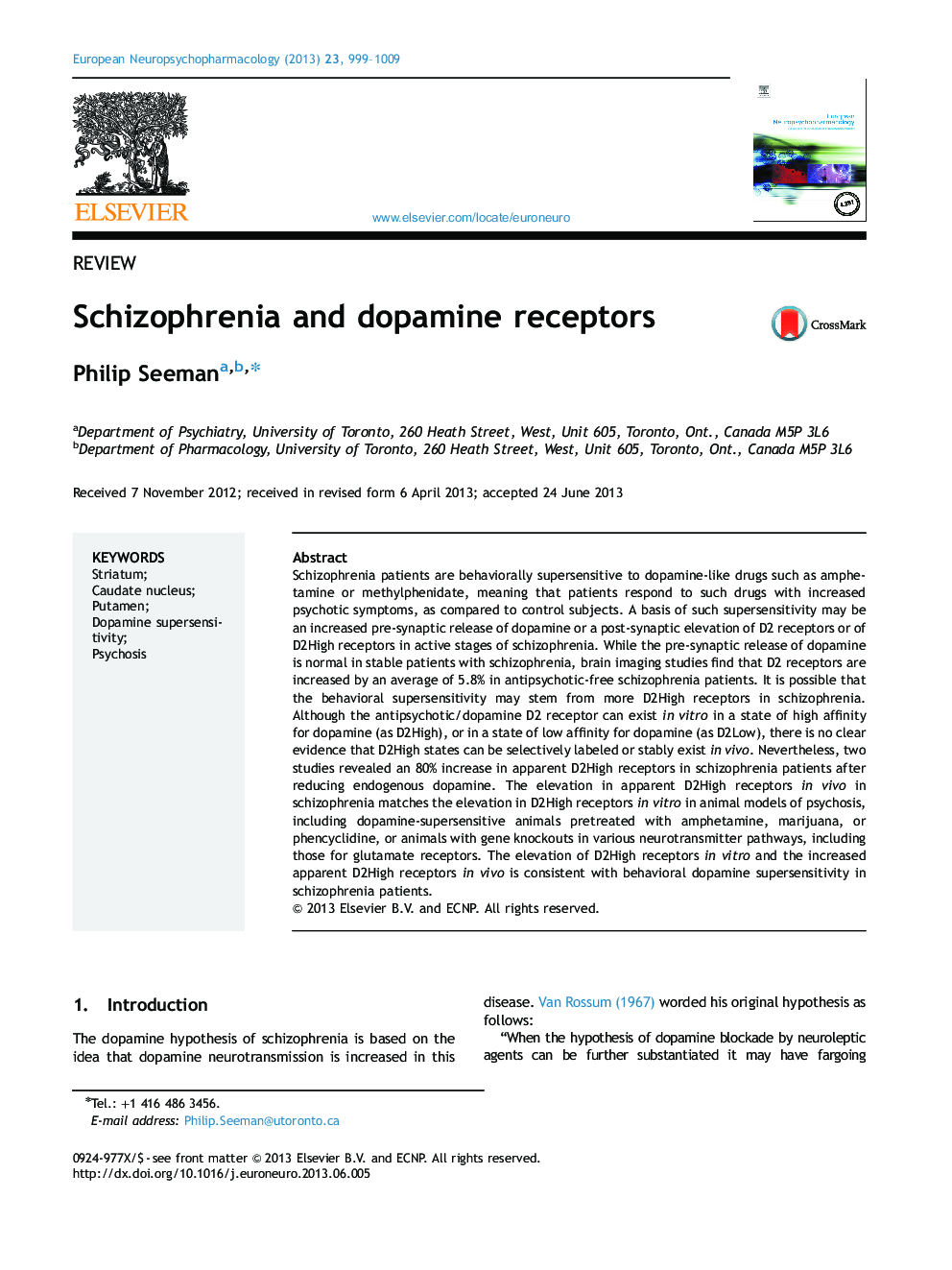| Article ID | Journal | Published Year | Pages | File Type |
|---|---|---|---|---|
| 319601 | European Neuropsychopharmacology | 2013 | 11 Pages |
Schizophrenia patients are behaviorally supersensitive to dopamine-like drugs such as amphetamine or methylphenidate, meaning that patients respond to such drugs with increased psychotic symptoms, as compared to control subjects. A basis of such supersensitivity may be an increased pre-synaptic release of dopamine or a post-synaptic elevation of D2 receptors or of D2High receptors in active stages of schizophrenia. While the pre-synaptic release of dopamine is normal in stable patients with schizophrenia, brain imaging studies find that D2 receptors are increased by an average of 5.8% in antipsychotic-free schizophrenia patients. It is possible that the behavioral supersensitivity may stem from more D2High receptors in schizophrenia. Although the antipsychotic/dopamine D2 receptor can exist in vitro in a state of high affinity for dopamine (as D2High), or in a state of low affinity for dopamine (as D2Low), there is no clear evidence that D2High states can be selectively labeled or stably exist in vivo. Nevertheless, two studies revealed an 80% increase in apparent D2High receptors in schizophrenia patients after reducing endogenous dopamine. The elevation in apparent D2High receptors in vivo in schizophrenia matches the elevation in D2High receptors in vitro in animal models of psychosis, including dopamine-supersensitive animals pretreated with amphetamine, marijuana, or phencyclidine, or animals with gene knockouts in various neurotransmitter pathways, including those for glutamate receptors. The elevation of D2High receptors in vitro and the increased apparent D2High receptors in vivo is consistent with behavioral dopamine supersensitivity in schizophrenia patients.
